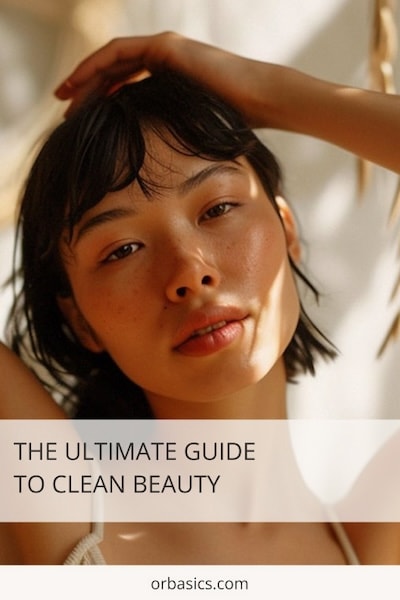Table of Contents
Ultimate Clean Beauty Guide: A Deep Dive into the Growing Trend
This page may contain affiliate links. We may earn a commission on purchases, at no additional cost to you. Learn more →
If you're like me and care about what you put on your face every morning, you've probably come across the "clean beauty" movement. This trend emerged in response to the lack of regulations in the beauty industry and has sparked a heated debate over its definition and the risk of greenwashing.
What exactly does "clean beauty" mean? And why should you care?
You might associate clean beauty with organic products, natural ingredients, and sustainable solutions. While these associations aren't wrong, the term "clean beauty" is not clearly regulated, leading to various interpretations.
The movement has gained momentum in recent years. According to a Harper's BAZAAR poll, nearly 50% of surveyed women are now using clean beauty products.
Clean beauty can be a powerful ally in achieving better, more transparent skincare—if we know how to interpret it correctly. Let's demystify clean beauty to empower ourselves to make conscious decisions about the products we use daily.
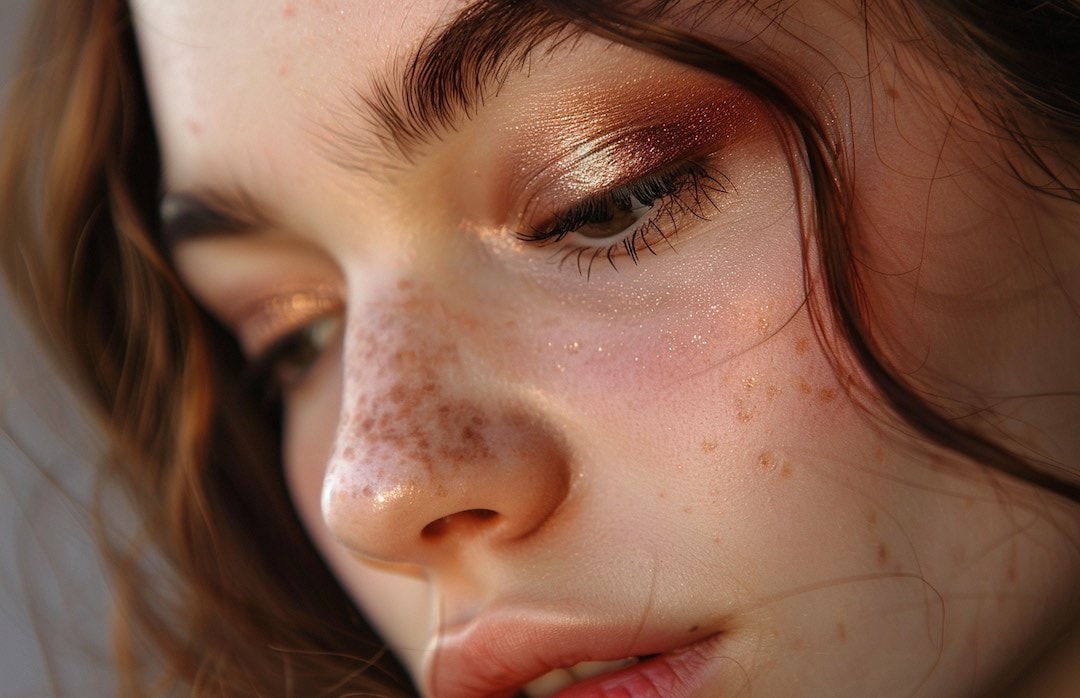
Key Takeaways
-
Get the Real Scoop: Finally understand what "clean beauty" means so you can make smart, informed choices about the products you use every day.
-
Love Your Skin: Say goodbye to irritation and allergies with products that ditch harmful ingredients like parabens, sulfates, and synthetic fragrances. Your skin will thank you!
-
Feel Good About Your Choices: Support brands that care about more than just profits. Look for those that prioritize cruelty-free testing and fair-trade sourcing—because beauty should be kind.
-
Be a Planet Protector: Help save the earth with products that come in eco-friendly packaging and use sustainable ingredients. Small changes can make a big impact!
-
Demand Honesty: Enjoy the peace of mind that comes from knowing exactly what’s in your products. Clean beauty brands are all about transparency, so you’re never in the dark.
What is Clean Beauty?
There is no clear definition of clean beauty, but it generally refers to cosmetic products that prioritize safety, sustainability, ethics, and transparency. This encompasses:
-
Non-toxic ingredients: Excluding harmful substances like parabens, sulfates, and synthetic fragrances.
-
Environmentally conscious packaging: Using recyclable or biodegradable materials.
-
Ethical sourcing and production: Ensuring fair-trade practices and cruelty-free testing.
-
Full ingredient disclosure: Transparency about what goes into the products and why.
Clean cosmetics should be "clean of harmful ingredients," such as parabens, sulfates, and synthetic fragrances. However, this doesn't mean they contain 100% natural ingredients.
The description of harmful chemicals varies by region due to different regulations. For example, the European Union has banned over 2,500 ingredients in personal care products, while the US FDA lists only 11 chemicals.
The term "clean beauty" isn't as new as you might think. It first popped up in the 1970s, thanks to Cover Girl and their "Clean Make-up" campaign, which championed that fresh-faced, no-makeup look. Fast forward to the early 2000s, and brands like Ren—whose name literally means "clean" in Swedish—picked up the baton and ran with it.
The movement gained popularity due to frustration over regulatory oversight of personal care products. It wasn't until the 2020s that it really took off, with many companies using the trendy slogan to describe their products.
True clean beauty means a holistic approach that considers not only product formulas but also production, packaging, and promotion. This should encourage brand transparency and inspire trust in customers by eliminating potentially harmful ingredients while considering the well-being of the planet.
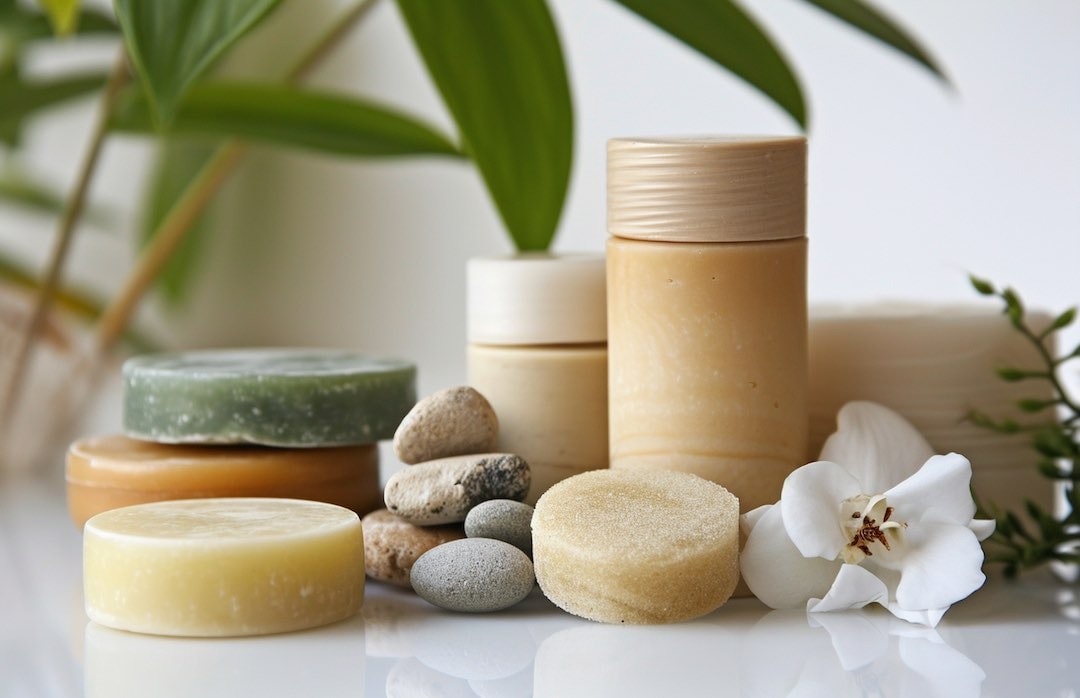
Key Benefits of Clean Beauty
Clean beauty offers several potential benefits that align with consumer demands for safer, more ethical, and environmentally friendly products:
-
Safer for Your Skin: Clean products often exclude potentially harmful ingredients like parabens, sulfates, and synthetic fragrances, reducing the risk of skin irritation and allergies. Learn more about ingredients to avoid.
-
Better for the Environment: Many clean beauty brands focus on sustainable packaging and ethically sourced ingredients, helping to reduce environmental impact.
-
Increased Transparency: Clean beauty companies tend to be more open about their ingredients and manufacturing processes, providing consumers with more information to make informed choices.
-
Potentially Gentler on Sensitive Skin: Natural, non-toxic ingredients are less likely to cause irritation or allergic reactions, making them suitable for sensitive skin.
-
Ethical Considerations: Many clean beauty brands prioritize cruelty-free testing and fair-trade sourcing, ensuring that their products are produced ethically.
Why is the Clean Beauty Trend Popular?
Clean beauty has expanded significantly in recent years. This trend is predicted to gain a higher market share in the beauty industry over the next decade, potentially quadrupling its worth by 2033.
What drives the clean beauty movement? While there has been more focus on clean ingredients and "free-from" products, we're seeing a shift in consumers' mindsets. It's more than just hype—people are becoming more climate and health-conscious, and this is reflected in their shopping choices. Companies offering sustainable packaging, animal-free testing, and vegan-certified products are increasingly valued.
The shift didn't happen overnight. Social media, climate activists, and documentaries like "Not So Pretty" * have played a significant role, highlighting the harmful effects of beauty and personal care products.
Organizations such as the European Environmental Bureau (EEB), the Environmental Working Group (EWG), and the Campaign for Safe Cosmetics have worked tirelessly to share useful information and classify certain ingredients found in personal care and cosmetic products as harmful and unsuitable for topical use.
These efforts impact the industry to create products that are better for your health, skin, and the planet, making your choice easier at a store.
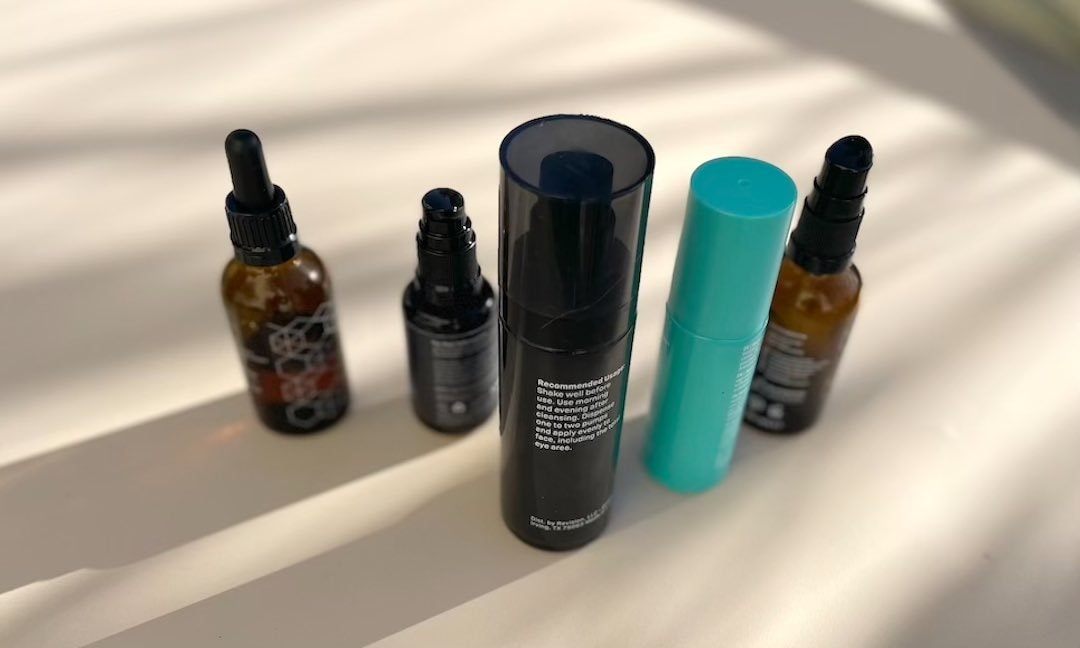
Why Should You Switch to Clean Beauty?
Understanding Potentially Harmful Ingredients
Embracing the clean beauty trend offers multiple benefits for our health and the environment. If you are looking for products with fewer chemicals and preservatives, clean beauty might be the right choice. It offers higher quality and more transparency from producers and retailers.
You might be attracted by environmental benefits, ethical and health aspects, which are the core of the clean beauty philosophy. Here’s why you should consider making the switch:
-
Avoid Harmful Ingredients: Ingredients commonly avoided in clean cosmetics, such as MI/MCI, fragrance mix, and formaldehyde, have been proven to harm human health, causing skin irritation, allergies, chronic rashes, or even links to cancer.
-
Benefit from Plant-Based Products: Plant-based products, often found in clean beauty, have a long history of use in traditional medicine and offer dermatological benefits.
-
Avoid Fragrance Risks: Fragrance producers use trade-secret formulas, and the FDA doesn't require these to be listed on labels. Opting for clean products, which are often fragrance-free, can save you from unpleasant consequences.
-
Better Ingredients: Clean beauty brands tend to use better, non-toxic ingredients and promote transparency, helping buyers make informed decisions.
Clean Beauty vs. Natural vs. Organic Beauty
The myriad of terms in beauty trends can be mind-boggling, to say the least.Clean beauty, organic beauty and natural beauty are often used interchangeably, but the terms refer to different tendencies in the industry.
Feeling confused? Let's make it all crystal clear.
-
Clean Beauty: Focuses on safety and non-toxicity, including synthetic ingredients if deemed safe. Clean beauty prioritizes the elimination of harmful substances and transparency in ingredient disclosure. You should know by now that the definition of "clean" can vary from brand to brand, but the focus stays on safety and non-toxicity rather than the source.
-
Natural Beauty: Uses ingredients sourced from nature. However, natural ingredients aren't necessarily safer or more effective and can include allergens and irritants. What's more, natural doesn't equal organic or vegan—natural cosmetics can include animal derivatives.
-
Organic Beauty: Contains ingredients grown without synthetic pesticides or fertilizers, certified by organizations like USDA Organic or COSMOS. To be considered organic, products must contain at least 95% of organically grown and processed ingredients. Organic beauty is the most regulated of the three, ensuring that products meet specific organic standards.
The lack of regulations in both natural and clean beauty means you need to stay vigilant and verify if brands' descriptions of their cosmetics are accurate.
How Sustainable is Clean Beauty?
The beauty industry has often been called out for its heavy reliance on single-use plastics and pollution. But guess what? Times are changing! As we consumers get smarter and more eco-conscious, brands are stepping up to meet our demands.
Today’s clean beauty isn’t just about safe ingredients—it's about sustainability too. This means using eco-friendly packaging and ensuring that products live up to their green promises.
While natural ingredients sound great, they’re not always better for your skin or the planet. What really counts is how these ingredients are sourced. Are they ethically harvested? Do they protect biodiversity? Is their production energy-efficient?
Look for clean beauty certifications like Ecocert, USDA Organic, or Leaping Bunny. These stamps of approval ensure that your non toxic skincare routine is as kind to the planet as it is to your face. So, next time you shop, remember: sustainability is the new beautiful!
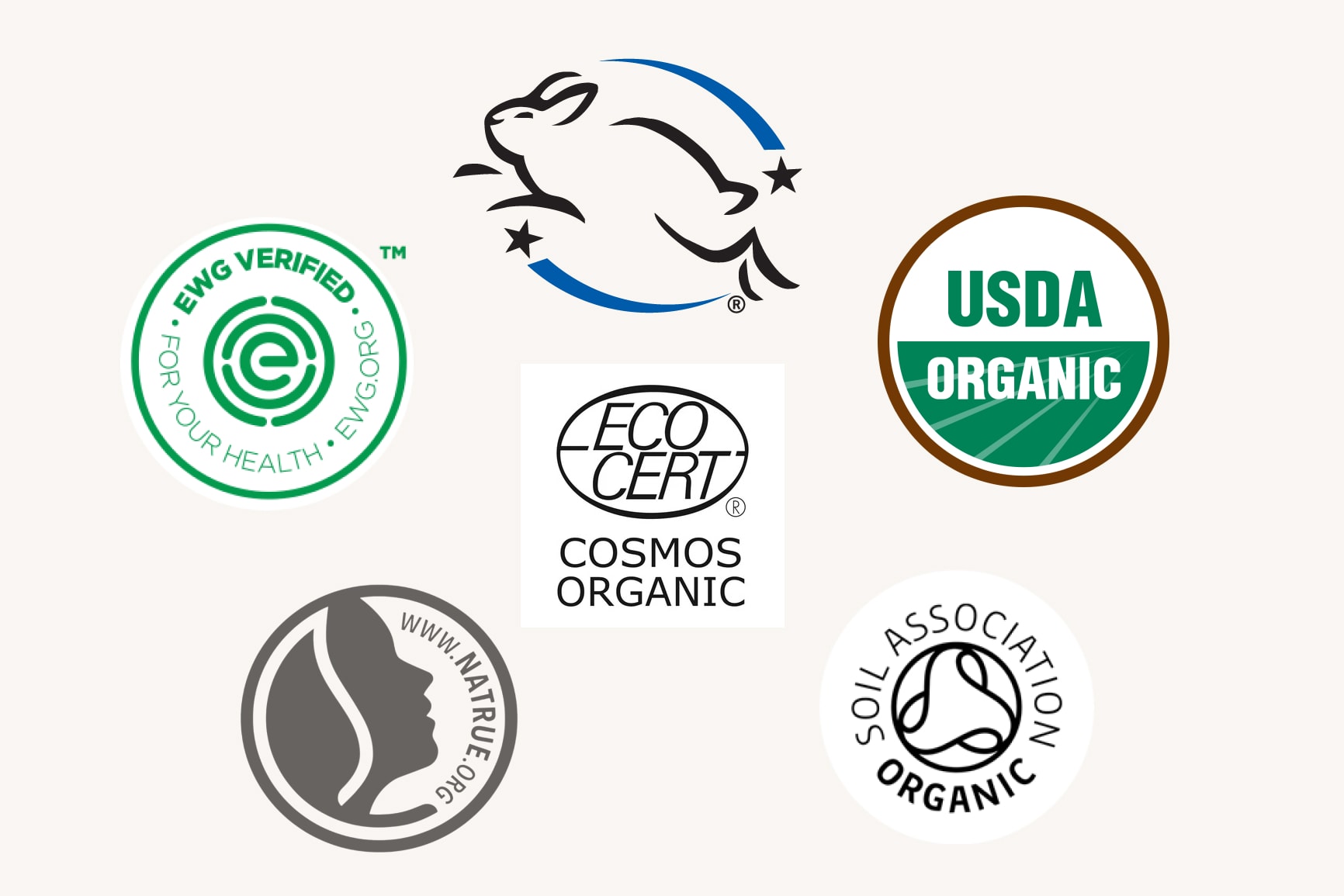
Unpacking Greenwashing & Cleanwashing
Beauty is in the eye of the beholder, but safety, credibility, and transparency hold higher value. As the clean beauty trend skyrockets, it becomes harder to identify genuine efforts among "greenwashing" and "cleanwashing" declarations.
Clean beauty has echoed in skincare and made headway in the makeup brands and fragrance industry. Many brands claim to be "clean" without facts to support their marketing slogans, and fearmongering is not unheard of. Anyone can call their products "clean," making the right decision tricky.
But that's not the only problem—many of the ingredients scrutinized for their safety are changing as companies try to "cleanwash" their products to make them more attractive to conscious consumers.
How can we recognize "greenwashing" before making a wrong choice?
-
Look for Certifications: Labels like EWG Verified or MADE SAFE verify beauty products to meet strict health standards.
-
Understand Terminology: Learn some basic terminology to understand ingredient lists better.
-
Trust Transparent Brands: Clean companies = transparent marketing. Brands like Goop products or Credo, known for its "Credo Clean Standard," advocate for new standards in beauty and offer products made without harmful ingredients.
-
Use Resources: Resources like EWG's app Healthy Living, Think Dirty and other apps help analyze products by searching through its database or scanning a barcode.
Making the Switch to Clean Beauty and Better Skin Care
It's time to reconsider our daily skincare routines. The good news? You don't have to replace all your products at once. If you want to switch to clean beauty for healthier, more transparent, and environmentally-friendly products, here are a few simple steps to follow:
-
Choose Reputable Clean Beauty Brands: Consider starting with reputable and well-known brands, such as Ilia* or 100% Pure*. These brands offer clean makeup including non-toxic lipsticks, clean mascara, clean foundations or non toxic eye shadows that are gentle on your skin and the planet.
-
Read Labels: Get into the habit of reading labels and learn how to identify potentially harmful and toxic products. Use resources such as the EWG's Skin Deep ingredient hazard score, which reflects known and suspected hazards linked to the ingredients.
-
Identify and Replace Toxic Ingredients: Take a look at your current cosmetics and skincare products. Research the ingredients to see if they’ve been linked to health problems. Begin replacing products containing toxic ingredients with clean alternatives
-
Clean Moisturizers: Starting your day with non-toxic natural skincare products and use a clean moisturizerto avoid parabens and other harmful chemicals, ensuring your skin stays hydrated and healthy.
-
Clean Haircare: For healthier hair, consider switching to clean haircare products. These products are free from sulfates and silicones, which can strip your hair of its natural oils and cause long-term damage.
-
Non-Toxic Perfume: Want to smell great without the toxins? Discover non-toxic perfumes that use natural fragrances and avoid harmful synthetic chemicals, providing a safe and delightful scent experience.
-
Non-Toxic Toothpaste: Keep your smile fresh and healthy with non-toxic toothpaste. These products avoid fluoride and artificial sweeteners, which can be harmful with prolonged use.
-
Non-Toxic Body Lotions: Nourish your skin with non-toxic body lotions free from harmful chemicals like parabens and phthalates, ensuring deep hydration without risks.
-
Non-Toxic Deodorants: Stay fresh all day with non-toxic deodorants that provide lasting freshness using natural ingredients like baking soda and essential oils, without aluminum and synthetic fragrances.
-
Non-Toxic Skin Washes: Cleanse your skin with natural face wash, non-toxic body wash and natural soaps that use gentle, natural ingredients to maintain your skin’s health and moisture balance.
-
-
Incorporate Clean Beauty into Daily Life:
-
Start Small: Begin with one or two products and gradually switch out your entire routine.
-
Self-Care Integration: Consider making clean beauty a part of your self-care routine. Enjoy the process of caring for your skin with products that are good for you and the planet.
-
Explore and Experiment: Don’t be afraid to try new products and brands. Clean beauty offers a wide range of options to suit different preferences and needs.
-
-
Take it Step by Step: Making the switch may take time, but it's worth it! Your and your family's health is not something you should need to sacrifice for beauty.
If you enjoyed this post, check out these other articles on safe and non toxic products:
Best Non Toxic Lip Balms for Soft & Healthy Lips
FAQ
What exactly is "clean beauty"?
Clean beauty refers to products that prioritize safety, sustainability, ethics, and transparency. This includes using ingredients free from harmful chemicals and ensuring all aspects of production, from sourcing to packaging, are environmentally conscious and ethical. The term is not strictly regulated, leading to various interpretations by different brands.
Why is clean beauty important?
Clean beauty is important because it aims to provide safer, healthier alternatives to traditional beauty products that may contain toxic chemicals.
It also addresses environmental concerns by focusing on sustainable practices and ethical sourcing, empowering consumers to make more informed choices.
How does clean beauty differ from natural or organic beauty?
Clean beauty encompasses products that are not only free from harmful ingredients but also manufactured ethically and sustainably. While natural beauty focuses on ingredients sourced from nature, and organic beauty requires ingredients to meet specific organic certification standards, clean beauty prioritizes overall safety and eco-friendliness, including both natural and synthetic ingredients.
What should consumers look for to avoid greenwashing in clean beauty products?
Consumers should look for transparency in ingredient lists, certifications from reputable organizations (such as EWG or MADE SAFE), and clear marketing that doesn't use misleading terms. Researching brands to ensure they uphold their claimed standards is also helpful
How can I start switching to clean beauty products?
Begin by replacing products that you use daily with cleaner alternatives, focusing on those known for their safety and transparency. Use resources like EWG's Skin Deep database to check the safety of ingredients and choose products from credible brands known for their commitment to clean beauty standards, such as Ilia or 100% Pure.
Pin for later
*The links are so-called 'affiliate links.' This means if you click on one of these links and make a purchase, we may receive a small commission at no extra cost to you, which in turn helps us to further develop the blog and create even more useful and valuable content for you!
Orbasics Gmbh is is also a participant in the Amazon Services LLC Associates Program, an affiliate advertising program designed to provide a means for sites to earn advertising fees by advertising and linking to amazon.com.

